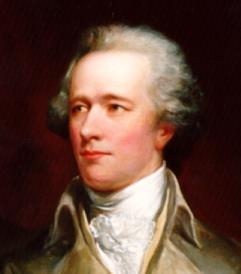Those few Americans left who have actually read and understand the Declaration of Independence and the Constitution know today’s government is far off track from what our founders intended. How did we get so far off course? Some point to out-of-control spending of the last few decades, some point to the socialistic programs of FDR and Wilson, others to the progressivism of Teddy Roosevelt, and yet others to the Civil War (which was not really a civil war, but a war of aggression by the federal government against the states who sought to remove themselves from the contract of the union). Yet we can go back even further, to an event most people have never heard of: the so-called Whiskey Rebellion of 1794 – the first attempt by a federalist minority to go beyond the bounds of the constitution in an effort to increase federal government control of the states.
While today we view whiskey as simply an adult beverage, it held a much different place in the culture of early America. To understand events surrounding the Whiskey Rebellion, it’s vital we understand the place of whiskey production in the late 1700s. Whiskey was an extremely important commodity in the early states, especially on the western frontier. Due to limited transportation avenues for getting crops to market – no railroads and few roads – most farmers found it necessary to convert extra grain into whiskey. Additionally, many areas, especially in the western frontier, were cash-strapped, so whiskey quite often served as an important item of barter in lieu of non-existent hard money.
President Washington’s Secretary of the Treasury, Alexander Hamilton, desired to consolidate the power of the federal government. Hamilton was an accomplished economist and understood that whoever controls the money supply also controls the power. Therefore, as an ardent federalist, he schemed for a plan which would put the federal government in control of the nation’s wealth. Most people know nothing about Hamilton’s plans or actions, yet they continue to impact us to this day.
In 1791, Hamilton put his plans into action. First, he convinced President Washington and Congress that the federal government should assume the states’ debt from the War for Independence. Most people at the time saw this as relieving a burden from the states, but failed to see the power it placed in the hands of the federal government, for once the federal government “owned” the states’ debts; the federal government “owned” the states. Along with assumption of the debt, Hamilton also oversaw formation of the First Bank of the United States to centralize monetary control. Additionally, he convinced Congress to impose an excise tax on whiskey, the first “internal” tax imposed by the federal government. Hamilton sold the tax to Congress as a means of paying off the just-assumed states’ debt. However, he admitted the tax would serve “more as a measure of social discipline than as a source of revenue” and “wanted the tax imposed to advance and secure the power of the new federal government.”
Not only was the tax extremely unpopular, it was applied in an unequal manner. Large distillers (big business) paid a flat tax on their production, while smaller distillers (mainly the farmers who owned small stills and operated as small businessmen) were charged a per-gallon rate. Large producers ended up paying an excise tax of roughly six cents per gallon, while the small producers were taxed at nine cents per gallon. Faced with a tax they considered unfair and un-Constitutional, small producers all over simply refused to pay the tax and jurors refused to sit for their trials, so enforcement proved all but impossible in most of the country. Despite the federal government’s official version, the vast majority of resistance to this excise tax occurred through peaceful civil disobedience.
Matters came to a head in the summer of 1794. Washington and Hamilton decided to focus on four counties in western Pennsylvania. They chose this area since they found wealthy officials willing to serve as tax collectors. Washington and Hamilton believed they could make an example of the protestors in Pennsylvania and thereby get the rest of the country in line behind the federal government.
On 7 August 1794, Washington invoked the Militia Law of 1792, allowing him to federalize the militias of Maryland, New Jersey, Pennsylvania and Virginia. Under Washington’s direct field command, this force of nearly 13,000 troops (a larger force than the entire Continental Army during the War for Independence) marched on western Pennsylvania to round up the tax-resistance ring leaders. With this action, Washington became the only sitting United States President to personally lead combat troops.
Alerted to the federal government’s move, some of the leaders fled to safety in the west. However, the government eventually arrested about twenty people. Following a trail in Philadelphia, all but two were released or acquitted. The court convicted the two remaining men, Philip Vigol and John Mitchell, of treason and sentenced them to death by hanging. In the end, Washington pardoned both men.
The Whiskey Rebellion was the first time the federal government used force in an attempt to impose its will on the American people. After fighting such a long war specifically to gain independence from this type of heavy-handed government tactic, the American people were dismayed. It drove many people from the Federalist Party towards Thomas Jefferson’s Democratic-Republican Party. Hamilton resigned as Secretary of the Treasury in 1795. Most small whiskey producers continued to ignore the tax. After succeeding Federalist John Adams as President, Jefferson repealed most internal federal taxes, including the Whiskey Tax in 1803, believing the federal government should rely on external taxes for its finance. Unfortunately, thanks to Hamilton, the stage was set for continued power grabs by the federal government at the expense of the people.



Truly a critical juncture in American history,
Have you read “The Whiskey Rebels” … historic fiction by David Liss. I wrote a review the other day …
http://judson2history.wordpress.com/